- News
- Reviews
- Bikes
- Accessories
- Accessories - misc
- Computer mounts
- Bags
- Bar ends
- Bike bags & cases
- Bottle cages
- Bottles
- Cameras
- Car racks
- Child seats
- Computers
- Glasses
- GPS units
- Helmets
- Lights - front
- Lights - rear
- Lights - sets
- Locks
- Mirrors
- Mudguards
- Racks
- Pumps & CO2 inflators
- Puncture kits
- Reflectives
- Smart watches
- Stands and racks
- Trailers
- Clothing
- Components
- Bar tape & grips
- Bottom brackets
- Brake & gear cables
- Brake & STI levers
- Brake pads & spares
- Brakes
- Cassettes & freewheels
- Chains
- Chainsets & chainrings
- Derailleurs - front
- Derailleurs - rear
- Forks
- Gear levers & shifters
- Groupsets
- Handlebars & extensions
- Headsets
- Hubs
- Inner tubes
- Pedals
- Quick releases & skewers
- Saddles
- Seatposts
- Stems
- Wheels
- Tyres
- Health, fitness and nutrition
- Tools and workshop
- Miscellaneous
- Tubeless valves
- Buyers Guides
- Features
- Forum
- Recommends
- Podcast
TECH NEWS
Felt’s new AR aero road bike… the inside story
US bike brand Felt have been busy in the wind tunnel creating new versions of their AR aero road bikes, which they reckon are the most aerodynamic road bikes in the world, and an all new IA non-UCI time trial/triathlon bike, which they claim to be the fastest bike of its kind ever developed, by a long way (standby for more on the IA later in the week).
Jim Felt, founder and head honch of Felt Bicycles, has been working on bike aerodynamics since the early 1990s. The brand’s aero road bikes have been leaders in terms of aerodynamics since they were introduced in 2008, but Felt admit that they've been heavier than much of the opposition, and not as stiff as some.
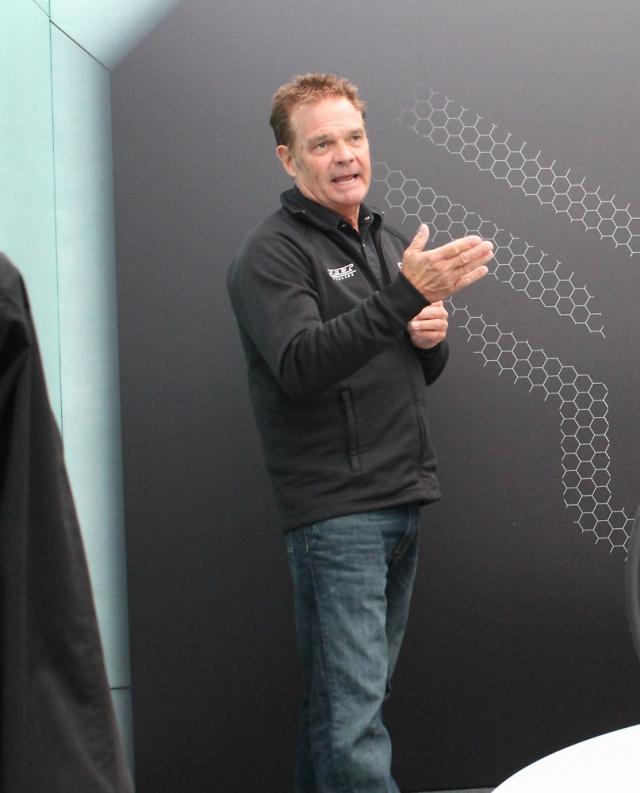
Felt are enthusiastic about the newly redesigned AR series, though. They think that taking aerodynamics, weight, stiffness and ride quality into account, it’s the leader in its field.
“I’ve never seen [wind tunnel] numbers like it,” said Jim Felt at UK distributor Saddleback’s dealer day. “This thing is in a category of its own. It’s going to take people years to get better figures.”

We did take a quick look around the bike at Eurobike and had a quick ride, but we didn’t have the full details from Felt at that stage. Now we’ve had the chance to get the story from Jim Felt himself. So, what have they done?
For a start, Felt have added more width to the down tube than before, especially towards the bottom bracket, to provide more stiffness. The AR is now similar to Felt’s F Series bikes in that respect. They also use a tapered head tube (1 1/8in to 1 1/4in), adding extra width there although retaining an airfoil shape.
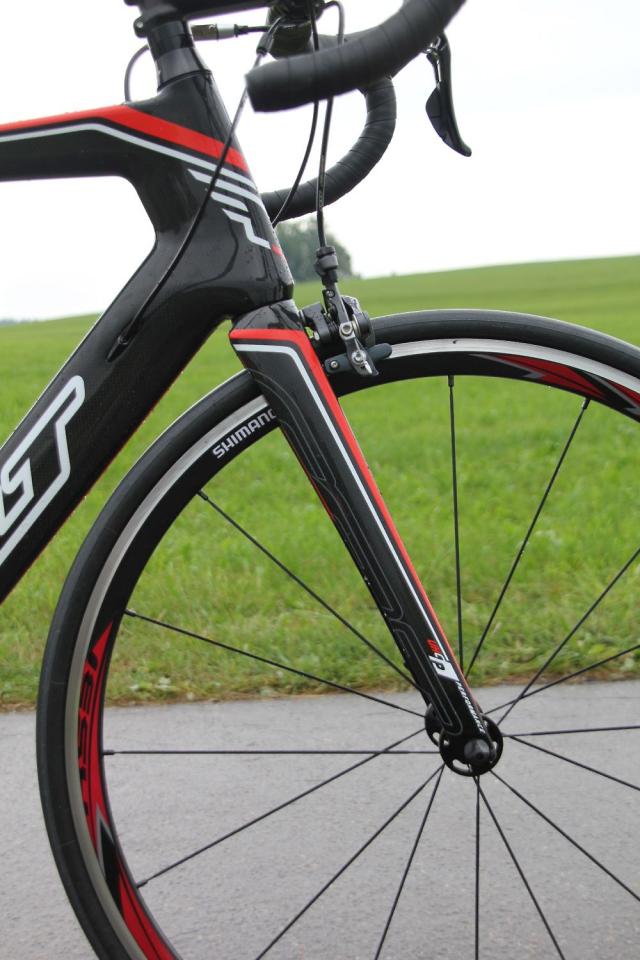
Adding width might help with rigidity but increasing the frontal area can reduce the aerodynamic efficiency, so Felt had to work to bring drag back down. One of the key features here is the addition of the new seatpost which is a smart piece of work.
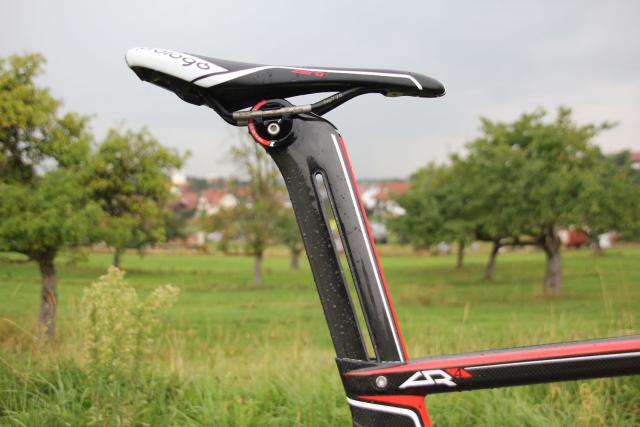
Rather than simply squeezing the post to keep it in place, Felt came up with an entirely new design called the Internaloc system. In short, the aero-shaped seatpost is hollow, as usual, but there’s a slot in either side and a couple of blocks in the middle (we're calling them 'blocks', by the way, not Felt). A bolt runs through the entire mechanism. As you tighten the bolt, you lock the frame, seatpost and the central blocks together to prevent slippage.

It’s a really clever design and means Felt no longer have to overbuild the seatclamp area of the frame, so they can save weight and reduce size, and they can keep the sides of the seatpost very thin because there’s no danger of crushing the post, meaning that they can dial in plenty of comfort.
The other clever bit is that the seat post is reversible so you can steepen the seat angle from 72.5° right up to 78.5° if, for example, you want to fit clip on tri bars.

Felt have also moved the rear brake on most of the AR models so it’s now in a more aerodynamically efficient position behind the bottom bracket, with a quick release on the cable. This has allowed them to do away with the brake bridge, and removing braking forces from the seatstays means they can use less material in that area, saving weight and increasing compliance.
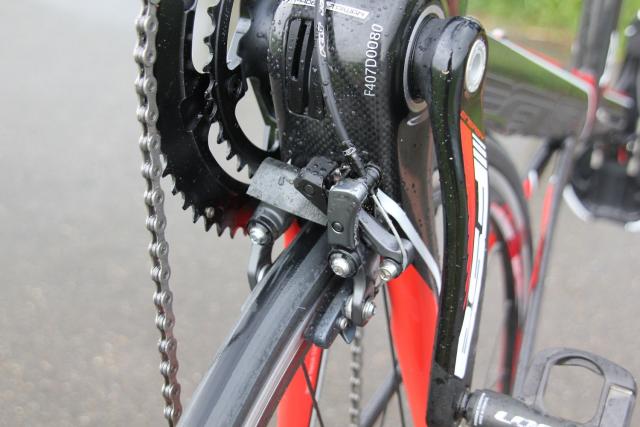
We noted just how easy it was to flex the new seatstays closer together when we videoed the new AR at Eurobike. Felt tell us that it is much more compliant than their F Series bikes and nearly as compliant at their Z Series.
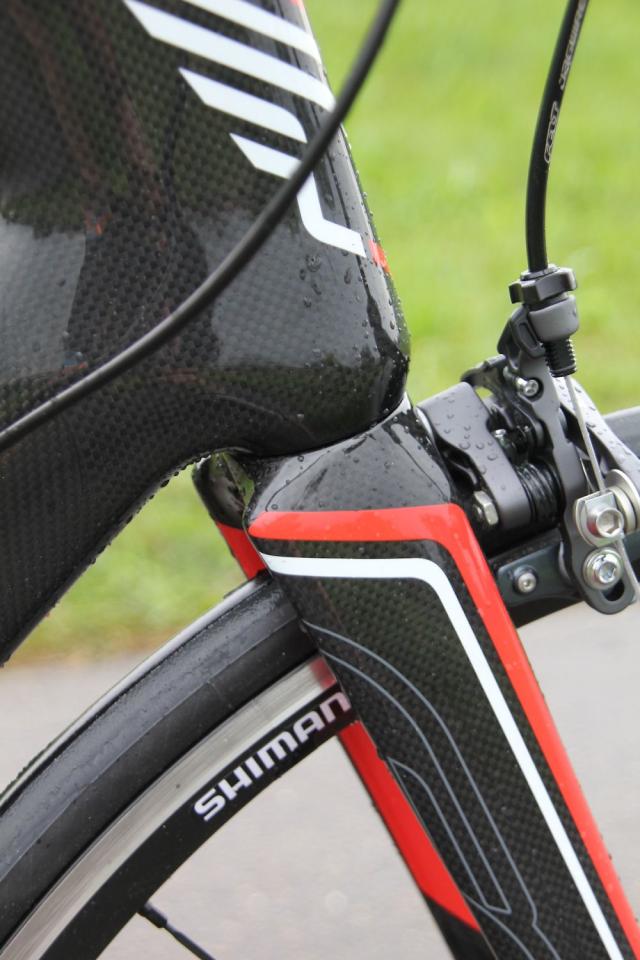
Felt have borrowed technology from their time trial/triathlon bikes for the AR’s fork. The fork crown is a complicated area when it comes to aerodynamics. You have all that apparent wind from the bike’s forward movement, along with a front wheel that’s spinning in the opposite direction to the airflow. The Twin Tail fork crown – you can see why it’s called that; it has a tail on either side – is designed to clean up the airflow and minimise the drag.
Felt have made various other changes to tube profiles around the bike and the result, they say, is that the new AR is 14.7% faster than the previous incarnation (they do their testing at 300 watts over 40km) and 28.7-31.1% faster than a round tube, baseline road bike.

The AR bikes are available in six sizes and two different moulds – if you want the option of using mechanical/cable operated gears, the frame is very slightly heavier – and in three different layups. One of the carbon options is TeXtreme which is more like thin ribbons than traditional carbon fibre, allowing for the use of less resin. The idea is that you can get a strong frame using less material – so the weight drops. There’s an alloy option too, the AR15 (£1,399).
The carbon versions start with the £1,799 Shimano 105-equipped AR5 and go right up to the £4,500 AR2 with a Shimano Ultegra Di2 groupset.
Felt are really excited about the new AR. They think that its strength across a wide range of variables means that they have something special on their hands here. If they’re right, expect to see a lot more of this bike over the next few years.
For more details go to www.saddleback.co.uk.
Mat has been in cycling media since 1996, on titles including BikeRadar, Total Bike, Total Mountain Bike, What Mountain Bike and Mountain Biking UK, and he has been editor of 220 Triathlon and Cycling Plus. Mat has been road.cc technical editor for over a decade, testing bikes, fettling the latest kit, and trying out the most up-to-the-minute clothing. He has won his category in Ironman UK 70.3 and finished on the podium in both marathons he has run. Mat is a Cambridge graduate who did a post-grad in magazine journalism, and he is a winner of the Cycling Media Award for Specialist Online Writer. Now over 50, he's riding road and gravel bikes most days for fun and fitness rather than training for competitions.
Latest Comments
- brooksby 1 hour 6 min ago
Are those numbers from the UK or are they worldwide?
- andystow 2 hours 33 min ago
Ok, just noticing this on my own bike. The rear wheel I bought from wheelbuilder.com. The front I rebuilt on my existing SON hub with a rim ordered...
- hawkinspeter 7 hours 2 min ago
Looks to me like they crashed into a "give way" sign
- jamesha100 7 hours 47 min ago
This is so sad but also so sadly familiar. I am not sure whether more punitive sentences - e.g. life driving bans - would make any difference but...
- chrisonabike 8 hours 7 min ago
Probably. But ... applied / enforced by whom? (See Private Eye's "Rotten Boroughs" page for evidence of how well that might work).
- Miller 8 hours 32 min ago
Because the reframing work in post is a right pain in the neck, the reframed quality doesn't match normal action cams, because the cameras are...
- staticV3 8 hours 42 min ago
Someone please explain to me. My Rockbros Q5 has:...


















Add new comment
11 comments
I'd love a chocolate teapot, maybe suggest M&S knock one up for Easter.
Re:Flobble - it actually comes with 4 inserts for the seatpost. 2 to cut down to fit for use and 2 as spare. They will also be available freely from felts website and the uk importer and dealer network. As you say, it doesnt take much to think about that and as such they have thought about it...along with a multitude of very impressive technical features that if you test ride the bike you will appreciate.
Also, hats off and recognition to Tim Lane - designer of the original DA and AR. Both of which were way ahead of their time (which maybe accounts for why they remained unchanged for so long)
23c only with that rear wheel cutout? Looks mighty snug with the 23c pictured
30% faster? Really? So that means if 300W on a normal, round tube bike gets you 45km/h, you'll be doing an easy 60ishkm/h on this thing at the same power output. LOL.
300W without a rider will result in a bike going spectacularly fast.
If the rider contributes ~80% of the drag, and 300W delivers ~35km/h on a normal bike solo on flat roads (about right with me on the saddle), then without rider (hypothetically speaking of course), the bike would do ~175km/h.
Somebody tell Graeme Obree - if he wants The Beastie to go really fast, get rid of the rider.
Erm...maybe I need to think a bit harder here...
I'm assuming the seatpost is shown without the 'dust strips' to illustrate the simplicity of its design.
Anyone that paid attention during the Eurobike features would have noticed there wasn't going to be a gaping hole up the side of the seatpost...
Looks beautiful.
Which is rare for me to say about a modern/carbon bike.
Not sure about the slotted seatpost but im not going to say they're wrong!
Without rider, presumably. Which is about as much use as a chocolate teapot.
Also, why put all that effort into aero features and then leave a stinking great slot in the seatpost. Surely a little plastic insert cut to length would smooth that off, look neater and cost next to nothing.
Any why the symmetric seatpost cross section when they could use a proper aero profile and take the Cervelo approach of two seat clamp positions to get the seat angle flexibility.
Odd.
Man there really needs to be some standardization of Aerodynamic testing. I am getting tired of hearing that every new bike is 20% more aero than the previous version and 10% more aero than EVERY other bike on the market.
We all think that but I spoke to the Felt guys about this and they don't think we're anywhere close. Some people on this forum in the past have tried to claim that's because bike engineers don't know much about aerodynamics. They're wrong.
One key reason for the lack of standardisation is that with a bike, you have a rider.
- What size rider are you going to use?
- What ride position are you going to set? A 10-mile TT position is going to be different from a 112-mile Ironman bike leg.
- Are you going to use non-aero headset spacers to get a shorter head tube to the same height as a longer head tube from a different manufacturer? Seems a bit unfair, but you can't go in the other direction.
- If you use a dummy in the wind tunnel, how are you going to replicate pedalling?
- What clothing/helmet is your dummy going to use?
- Are you going to let the rider have any drink with him? Or food?
You could test the bikes without a rider... but that's not how it works in the real world. The aerodynamics of the rider influences the aerodynamics of the bike and vice versa.
Plus, wind angle is massively important at relatively slow bike speeds - but winds vary massively from place to place and time to time. Standards in one place might be irrelevant in another place.
Are all frames going to be tested with the same wheels on? And tyres? What width? If you're using tubs, the way they're glued on makes a difference to the aerodynamics. You can't just say, for example, that for a standard test we'll use Zipp 404s with 23c tyres on because each different set of wheels and tyres will have different levels of drag.
Then you've got differences between different wind tunnels. The same bike in one wind tunnel won't give the same results in another wind tunnel.
Etc etc etc.
The point is, we'd all like standardised results we can compare, but it ain't gonna happen any time soon.